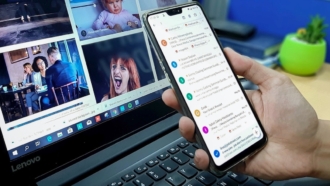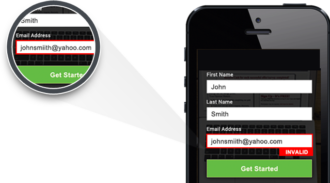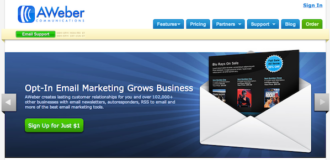What’s a good email open rate these days?
The answer depends on several factors.
Mailchimp, a popular email marketing platform, conducted a study that analyzed hundreds of millions of emails. They discovered that the average open rate was 20.81 percent across all industries.
GetResponse, another email marketing platform, did their own study that looked at 4 billion emails sent from their platform from July through December 2018. They discovered their average open rates fared slightly better, ranging from 19 to 33 percent. Their average click-through rates (CTR) ranged from 2.3 to 9 percent.
In this post, we’ll walk you through how to improve your email open rates, including
- How to calculate your email open rates
- Why your email open rate is lower than you expected
- How to improve it
Calculating your email open rate
You can’t improve what you don’t measure. This goes doubly so for email open rates.
To calculate your open rate, take the number of unique opens and divide it by the total number of emails sent minus bounces. For example, if you send 500 emails, 250 people open them, and 50 emails bounce, you have an email open rate of 56 percent.
This can get a little more complicated, as each email marketing platform uses its own tracking pixels to determine what constitutes an “open.” For instance, if the graphics don’t fully load or if a user has email tracking disabled, it won’t show as an open even if they did read the whole email.
Why your email open rate is low
The two biggest factors for a low email open rate are list quality and deliverability issues.
Email list quality
Your list quality roughly boils down to three things:
- New subscriber frequency. Are you adding new subscribers regularly?
- Ratio of active to inactive subscribers. Are the people on your list reading your emails?
- Number of hard and soft bounces. Are there a bunch of inactive accounts on your list?
One strategy to instantly improve your list quality is to segment your list.
According to HubSpot, subscribers are 75 percent more likely to open and click through your emails if they’re segmented.
Email deliverability
When’s the last time you looked through your spam folder? If you’re like most people, it’s been awhile. I checked one of my inboxes for this post and found over 100 emails in my spam folder.

Some estimates show that 20 percent of emails never even show up in your subscribers’ inboxes. If their spam folders look anything like mine, your email is never going to get opened.
Here are some basic tips to avoid the spam folder:
- Run all of your emails through a spam testing tool like Mail-tester.
- Don’t use spammy words in the subject line, like “get approved for a loan,” “no money down,” “100% free,” “guarantee,” “lose weight fast,” “get rich quick,” etc.
- Don’t use all caps or weird capitalization LiKe ThIs.
5 tips to improve your open rate
Ways to improve your open rate
While we’re sharing just five tips, there’s a lot of nuance in this topic. We can’t possibly cover everything without turning this post into an e-book.
1.Make the subject line and preview text compelling
People decide whether or not to open an email based on the subject line and short preview text. Make sure your email subject line is clear, concise, and offers something of value.
As seen in the image above, these are all examples of decent subject lines. They get to the point and in some cases, like Jay’s email, offer value.
You can even use emojis for emphasis. In fact, HubSpot found that brands that use emojis have higher open rates than those that don’t. Just don’t overdo it, unless your audience is tween and teen girls.
2.Send emails from an actual person, not a generic email
Another significant factor is the “from email name.” Think about it. Would you rather open an email from Robert in Support or support@companyxyz.com or, even worse, noreply@companyxyz.com? An email addressed from Robert in Support personalizes your message and results in more people opening it.
3.Optimize for mobile
According to Google, more than 75 percent of the 900 million Gmail users access their emails from mobile devices. This means that at a minimum, your email should be responsive and look great whether a subscriber is reading on their phone, tablet, or laptop.
We’d also recommend experimenting with plain-text emails, which continue to get higher open rates when compared with HTML.
4.Use clear and concise messaging with strong CTAs
Most people read their emails on their smartphones, whether that’s while commuting on a train, in the checkout line, or in between meetings. If the email requires more than 10 seconds to skim through or requires more than a yes or no response, it’s going to get punted until later.
You can make your message stand out by employing copywriting tactics, such as
- Leading with benefits, not features
- Using scarcity
- Making your email easy to skim by breaking up walls of text with images, GIFs, etc.
- Having a strong CTA in the email (the fewer CTAs you include and the easier you make it for someone to take action, the more likely they will do it)
5.Experiment with different email send times
There are always new studies purporting that a particular day of the week is the best time to send an email. While you can test this, the reality is you shouldn’t rely on blanket email timing studies. Instead, it’s best to test a bunch of times and see what resonates best with your customers. This might be Tuesday morning, or it could be Saturday afternoon.
While we covered a few of them, many factors go into improving your email open rate. If you’re just getting started, we recommend starting with list quality and deliverability, which will ensure that your email lands in your subscribers’ inbox. Then start focusing on improving the subject line, the timing, the formatting of your email, and the copy.
































































































Send Comment: